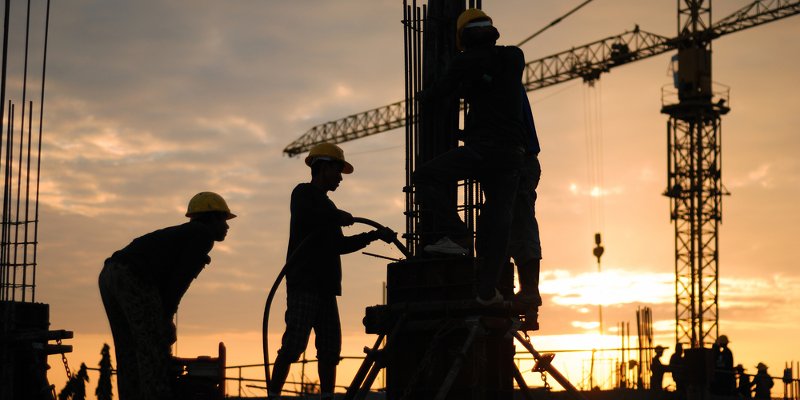When compared with 2018, the level of all work in 2019 saw a 2.5% increase.

Construction output saw a quarterly increase of 0.5% in Q4 2019 according to the latest figures by the Office of National Statistics (ONS).
This growth was driven by a 0.8% rise in new work, which offset a 0.1% fall in growth in repair and maintenance.
Private new housing and public other new work both fell by 1.1%, with the largest positive contributions coming from private commercial and public new housing which grew by 2.5% and 8.4% respectively.
When compared with 2018, the level of all work in 2019 saw a 2.5% increase which was driven by a 3.4% growth in new work and 0.7% rise in repair and maintenance.
New orders grew by 4.4% in Q4 2019, which was driven by an 11.2% rise in all other work but offset by an 8.5% fall in new housing.
Gareth Belsham, director of the national property consultancy and surveyors Naismiths, said: “For an industry which saw more businesses go to the wall than any other in 2019, the news that construction ended the year as the fastest-growing sector of the UK economy is cause for celebration.
“Growth of 0.5% over the quarter wouldn’t normally set the world alight.
"But construction’s solid performance offers more than just bragging rights over the UK’s services and manufacturing sectors – it’s also a vindication for an industry that was buffeted more than any other by Brexit uncertainty.
“True, the detail of the report is no unalloyed triumph.
"New residential building work fell by 1.1% during the quarter, and new orders for private sector housebuilders fell by 8.5%.
"Given Britain’s urgent need for thousands of new homes, such weak numbers are a worry.
“But the positives far outweigh the weaknesses. Most satisfying of all is the surge in all new orders – up 4.4% on the previous quarter.
“When you bear in mind that this figure scarcely captures the Boris bounce – which didn’t feed through until after the December election, things start to look even more rosy.
“With early indications from January looking strong, there’s a growing feeling that the industry is turning a corner, propelled by a new sense of optimism and possibility.
“If the Boris bounce is what powers the industry back to health in 2020, the foundations were laid in the final quarter of 2019.”



